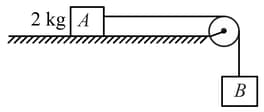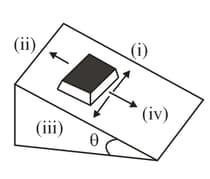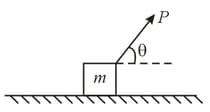Embibe Experts Solutions for Exercise 6: Exercise 4.6
Embibe Experts Physics Solutions for Exercise - Embibe Experts Solutions for Exercise 6: Exercise 4.6
Attempt the free practice questions from Exercise 6: Exercise 4.6 with hints and solutions to strengthen your understanding. Gamma Question Bank for Engineering Physics solutions are prepared by Experienced Embibe Experts.
Questions from Embibe Experts Solutions for Exercise 6: Exercise 4.6 with Hints & Solutions
A block of mass is placed on the floor A horizontal force of is applied on the block. The force of friction between the block and floor is

A bus starts from rest and travels a distance along a straight horizontal road. The coefficients of static and kinetic friction between the road and the tyres are and respectively. The minimum time of travel is proportional to
Find the contact force on the block having mass (Assume wedge to be fixed)

The coefficient of friction of a surface is What should be the angle of inclination so that a body placed on the surface just begins to slide down?
The coefficient of static friction, µs, between block A of mass 2 kg and the table as shown in the figure is 0.2. What would be the maximum mass value of block B so that the two blocks do not move ? The string and the pulley are assumed to be smooth and massless. (g = 10 m/s2)

A block stays in equilibrium on an inclined plane. It is easiest to push along

A force acts on a block of mass at an angle of with horizontal. The friction force between the block and ground (assuming coefficient of friction between the contacting surface) is

A block is placed on a rough horizontal surface. The minimum force required to slide the block is

